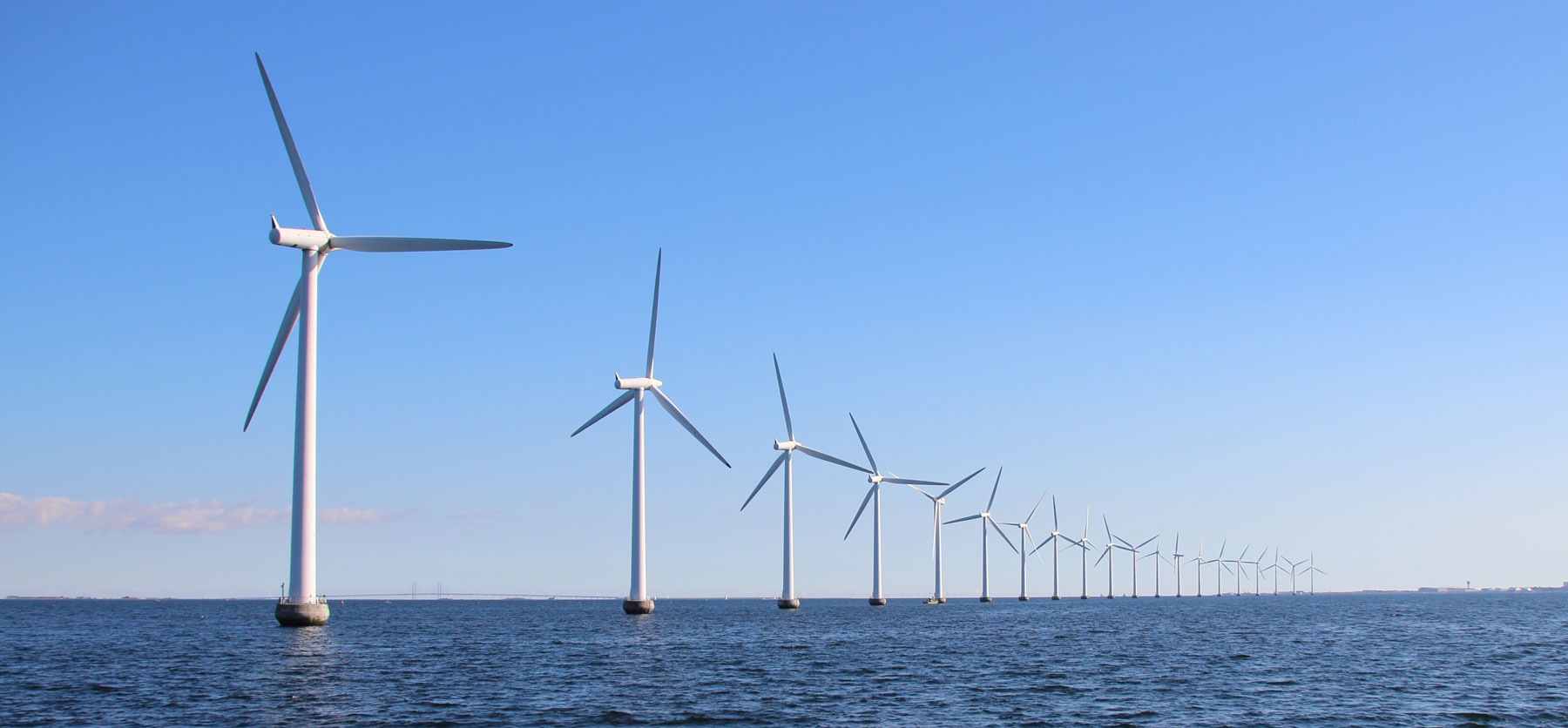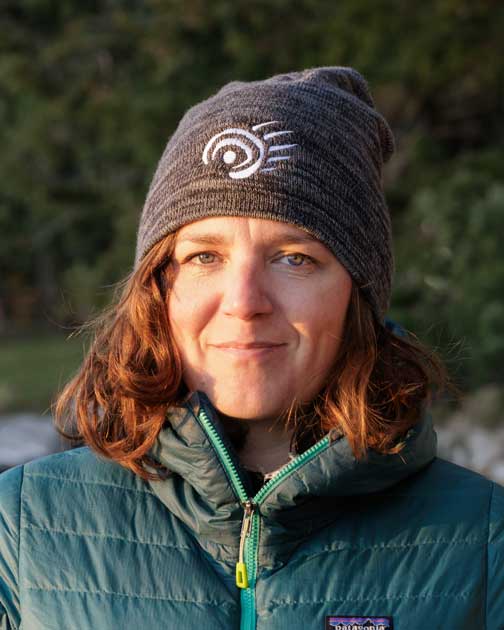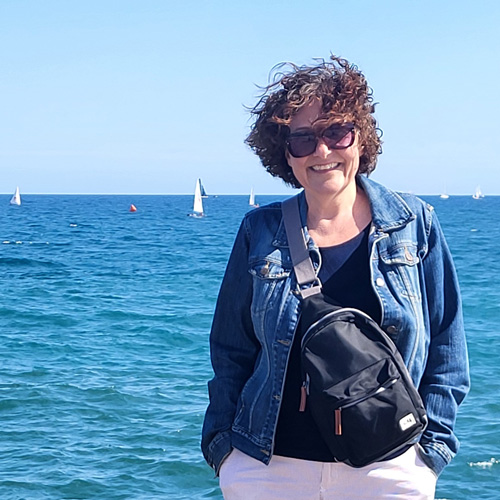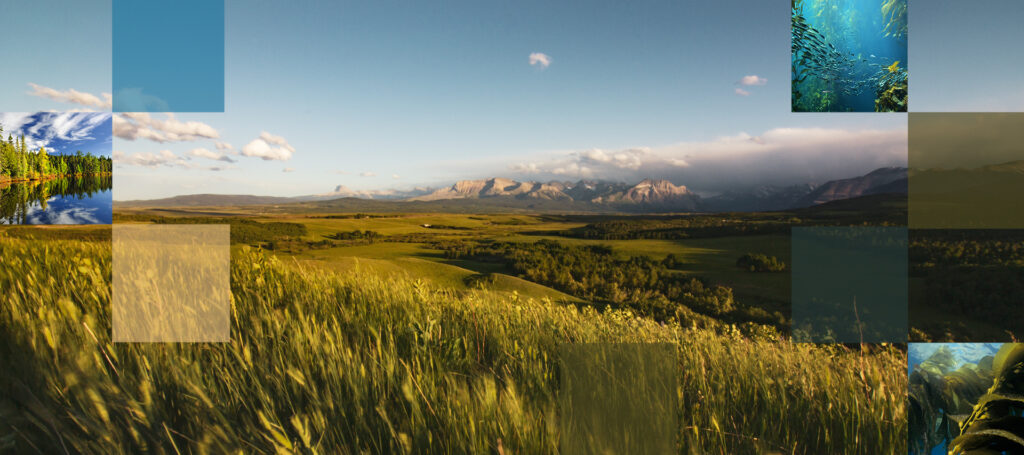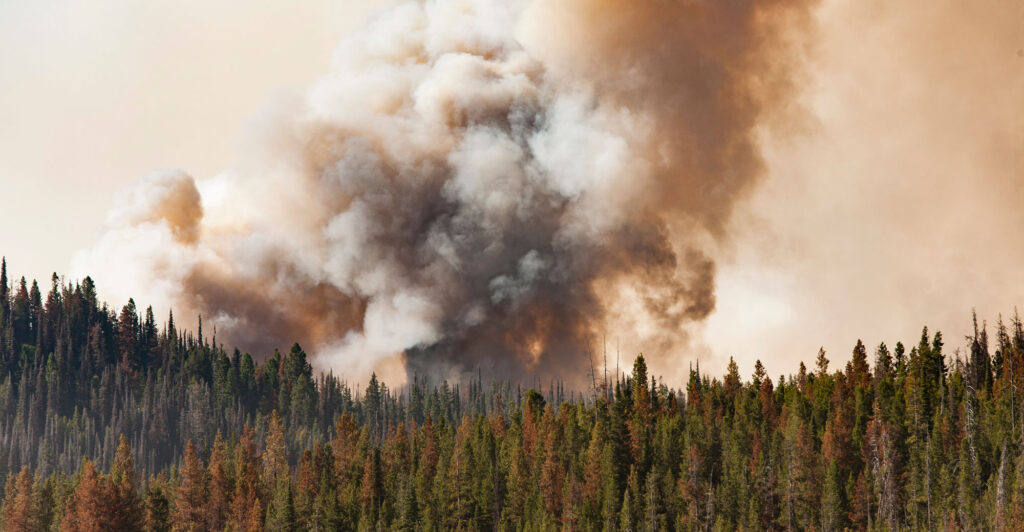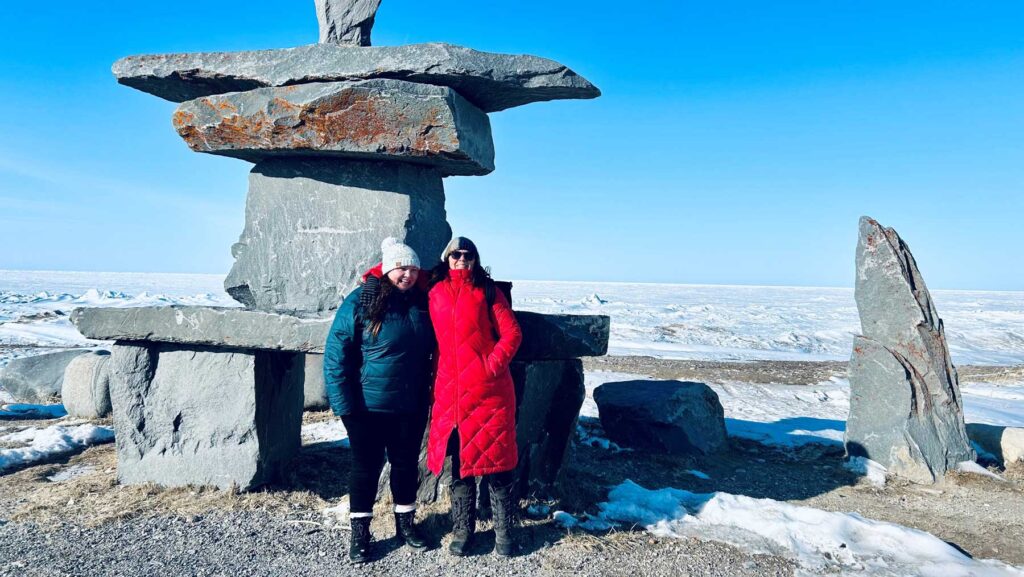In 2014, not long after I first joined CPAWS, a heartbreaking sight unfolded along the Pacific coast. Hundreds of thousands of dead Cassin’s auklets — a small, rather drab-looking seabird, the introverted cousin to the puffin — washed ashore. The likely culprit? A huge patch of unseasonably warm water in the Pacific, dubbed THE BLOB, wiped out the plankton these birds (and countless others) rely on for food. It was a wake-up call.
I share this story because, like many others, it shows why CPAWS works so hard to defend marine life and coastal communities against harmful human activities. We desperately need to invest in renewable energy and low-carbon technology to reduce carbon emissions and, hopefully, the impacts of climate change. But how we do it matters.
This is why CPAWS is raising the alarm about a recent proposal to allow industrial wind energy projects in two existing and proposed protected areas off the coast of Nova Scotia: the Western/Emerald Banks Marine Refuge and Sable Island Bank. These places aren’t just coordinates on a map — they’re biological hotspots, teeming with life and critical for the health of our fisheries and marine ecosystems.
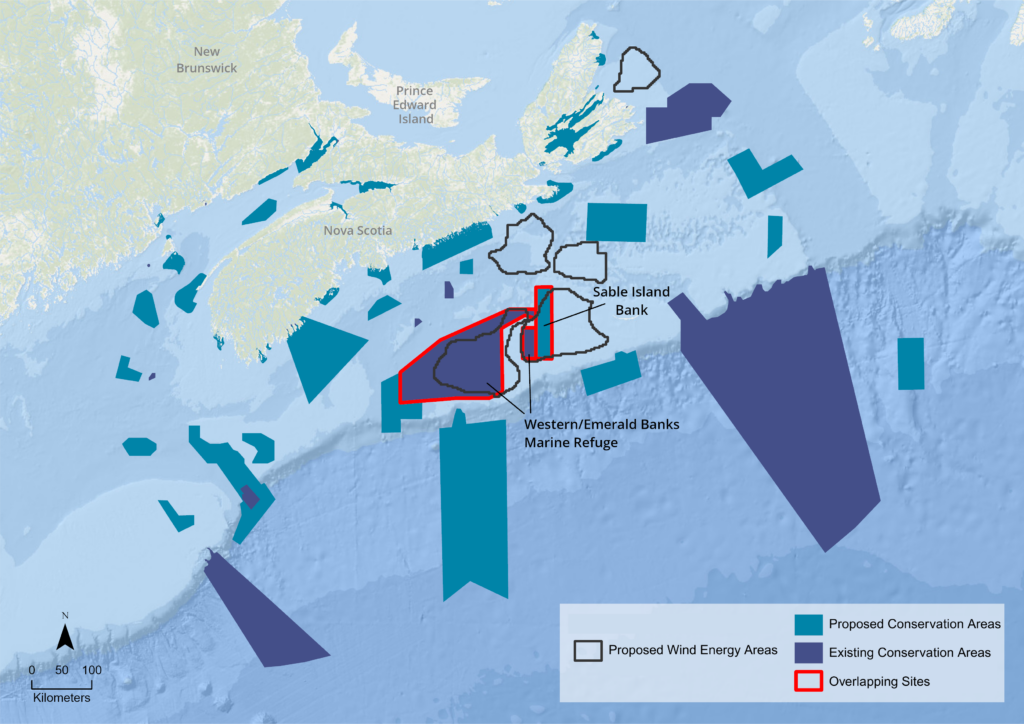
What’s at Stake?
The Western/Emerald Banks Marine Refuge was first identified for protection by fishers over 30 years ago. They saw firsthand how critical this area is for groundfish like cod and haddock, usually found near the ocean floor. Those fishers knew that to protect the fish and their own livelihoods, they needed to protect this fragile ecosystem. It became a Marine Refuge in 2017, recognizing its rich seafloor habitats that create a safe, thriving underwater world where adult fish can breed and baby fish can grow.
Sable Island Bank, which is also a proposed protected area, is similarly rich. It’s a vital breeding ground for haddock and other groundfish, important habitat for many other fish, and home to abundant and diverse populations of invertebrates, such as scallop and crab. These species support fisheries and feed communities.
Putting industrial wind farms here could unravel all of that. If allowed, industrial wind development in these areas would bring:
- Seafloor damage from anchors, turbine foundations, and cables — destroying sensitive habitats.
- Chemical pollution from anti-fouling agents and lubricants used in turbine maintenance.
- Noise and vibration from turbine operation and vessel traffic — disrupting species like whales that rely on sound to communicate.
- Collision risks for marine mammals with turbine infrastructure and with vessels servicing that infrastructure.
Climate Action Can’t Mean More Ecological Harm: There’s a Better Way
We need more wind power. But building it in the wrong places could cause lasting damage to the same ecologically important areas we are trying to save from climate change.
It’s also important to remember that thriving ecosystems and biodiversity are important for mitigating climate change. Biodiverse ecosystems act as natural carbon sinks by incorporating carbon into the biomass of marine organisms — and by facilitating long-term carbon sequestration in deep ocean waters and seafloor sediments.
This is why conservation planning is essential. Networks like the Scotian Shelf-Bay of Fundy Conservation Network are designed to map out which ocean areas are too important to risk — places where corals grow, fish breed and marine life thrives. These are the foundation of a healthy ocean, and by respecting them, we’re protecting fisheries, communities and marine life.
Fighting climate change and protecting nature must go and-in-hand. We can build renewable energy projects that are low-impact and high-value — but we need to keep them out of the most sensitive marine areas.
Fishers, scientists, conservationists and Indigenous leaders have already done the work of identifying what needs to be protected. Now it’s up to governments and industry to listen.
Photo: Peggy’s Cove Lighthouse by NAN
Article written by:
Banner photo: Wind turbines by chrisrt
Other stories you might be interested in:

